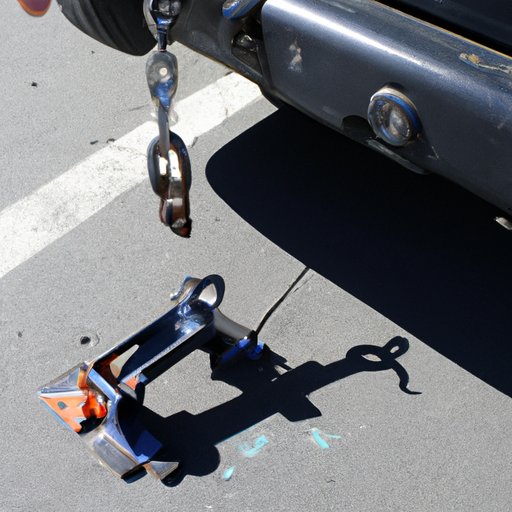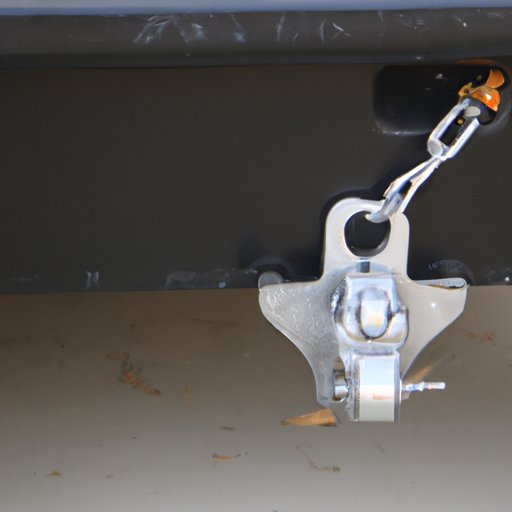Overview of Weight Distribution Hitch
A weight distribution hitch is a device used to evenly distribute the load from a trailer to the tow vehicle when towing. It utilizes spring bars and chains to transfer some of the weight of the trailer to the front axle of the tow vehicle, allowing it to better handle the weight of the load. Weight distribution hitches can be used with trailers of all sizes, from single-axle to double-axle, and can be used with both cars and trucks.
Benefits of Installing a Weight Distribution Hitch
Installing a weight distribution hitch has many benefits, including improved towing performance, increased safety, and reduced stress on the tow vehicle. When properly installed, a weight distribution hitch will improve the handling of the trailer and make it easier to control. It also helps reduce swaying of the trailer, which can be dangerous in windy conditions. Additionally, the weight distribution hitch will help reduce wear and tear on the tow vehicle’s suspension, as the weight of the trailer is more evenly distributed.

Explaining the Components of a Weight Distribution Hitch
The weight distribution hitch consists of several components, each of which plays an important role in transferring the weight of the trailer to the tow vehicle. The head is the main component of the hitch, and is connected to the trailer via the chains. The chains are attached to the trailer frame, and the head is connected to the tow vehicle. The sway control is a mechanism that helps reduce swaying of the trailer, while the spring bars are used to transfer some of the weight of the trailer to the tow vehicle. Additionally, the brackets and cam lever are used to adjust the tension of the spring bars.
How to Install a Weight Distribution Hitch
Installing a weight distribution hitch is a relatively straightforward process, but there are a few things to keep in mind. First, it’s important to select a hitch that is appropriate for the size and weight of the trailer. Once the hitch is selected, it’s time to attach the head to the tow vehicle. This is done by attaching the brackets to the tow vehicle frame, followed by connecting the chains to the trailer frame. Next, the spring bars are connected to the brackets and the head, and the sway control is attached to the trailer frame. Finally, the cam lever is used to adjust the tension of the spring bars.

Tips for Ensuring Proper Installation
When installing a weight distribution hitch, it’s important to ensure that all components are securely attached and properly adjusted. Additionally, it’s important to follow the manufacturer’s instructions for adjusting the tension of the spring bars. Lastly, it’s important to check the weight distribution of the trailer after installation to ensure that it is correct.
Troubleshooting Common Issues with Weight Distribution Hitches
There are a few common issues that can arise when using a weight distribution hitch. The first is improper weight distribution, which can cause the tow vehicle to struggle when towing. To check for proper weight distribution, it’s important to inspect the trailer tongue weight and make sure that it is within the recommended range. Additionally, it’s important to inspect all components of the hitch for damage or wear, as this can affect its performance. Lastly, if the trailer is being towed in different conditions (such as uphill or downhill), it may be necessary to adjust the tension of the spring bars.

Tips for Maintaining a Weight Distribution Hitch
To ensure that your weight distribution hitch continues to perform optimally, it’s important to regularly inspect all components of the hitch for damage or wear. Additionally, it’s important to keep the hitch clean and free of debris, as dirt and grime can cause corrosion and other damage. Lastly, it’s important to follow the manufacturer’s instructions for lubrication, as this will help keep the hitch functioning correctly.

Comparing Different Types of Weight Distribution Hitches
When selecting a weight distribution hitch, it’s important to consider the type of trailer you are towing and the weight of the load. Single-axle and double-axle weight distribution hitches are available, and they have different weight ratings. Additionally, the price range of weight distribution hitches can vary significantly, so it’s important to compare different models before making a decision. Lastly, some weight distribution hitches come with additional features, such as sway control or adjustable spring bars.
(Note: Is this article not meeting your expectations? Do you have knowledge or insights to share? Unlock new opportunities and expand your reach by joining our authors team. Click Registration to join us and share your expertise with our readers.)
